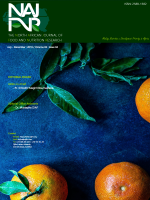Main Article Content
Phytochemical analysis, antioxidant and anti-Candida albicans activities of Annona cherimola Mill. fruit pulp
Abstract
Aims: The main objectives of the present study were to characterize the phytochemical profile of Annona cherimola Mill, to assess its antioxidant characteristics and its antifungal activity against Candida albicans.
Methods: Aqueous decoction, aqueous infusion, aqueous maceration, and methanolic maceration were screened for the presence of phytochemicals and to quantify content of phenolics, tannins, and flavonoids. Furthermore, antioxidant activity was assessed using DPPH and FRAP assays, as well the assessment of antifungal activity for the different extracts.
Results: Results showed that phenols, tannins, flavonoids, and saponins were present in the four extracts. The aqueous maceration extract presented the highest total phenolic content (3.687 mg GAE/g of extract). Decoction extract showed the lowest phenolic content 2.504 mg GAE/g. Besides, infusion showed the most important total flavonoids content (2.567mg CE/g). The most relevant total antioxidant activity was found for decoction (lowest IC50 = 12.61 mg/ml AAE). The aqueous maceration exhibited the less antioxidant activity (IC50 = 21.98 mg/ml AAE). The best scavenging activity was observed for decoction (IC50 = 7.27 mg/mL). All the extracts showed a reducing capacity. Infusion exhibited the best reducing power (EC50 = 11.29 mg/mL), compared to decoction (EC50 = 39.32 mg/mL). Regarding antifungal activity, at 100 and 200 μg/mL, decoction and methanolic maceration resulted in 6 and 9 mm inhibition zone, respectively. In addition, at higher doses (800 and 2000 μg/mL), inhibition zone increased in a dose dependent manner for all the extracts.
Conclusions: Annona cherimola Mill. could be an important source of bioactive molecules with antioxidant and antifungal activities.







